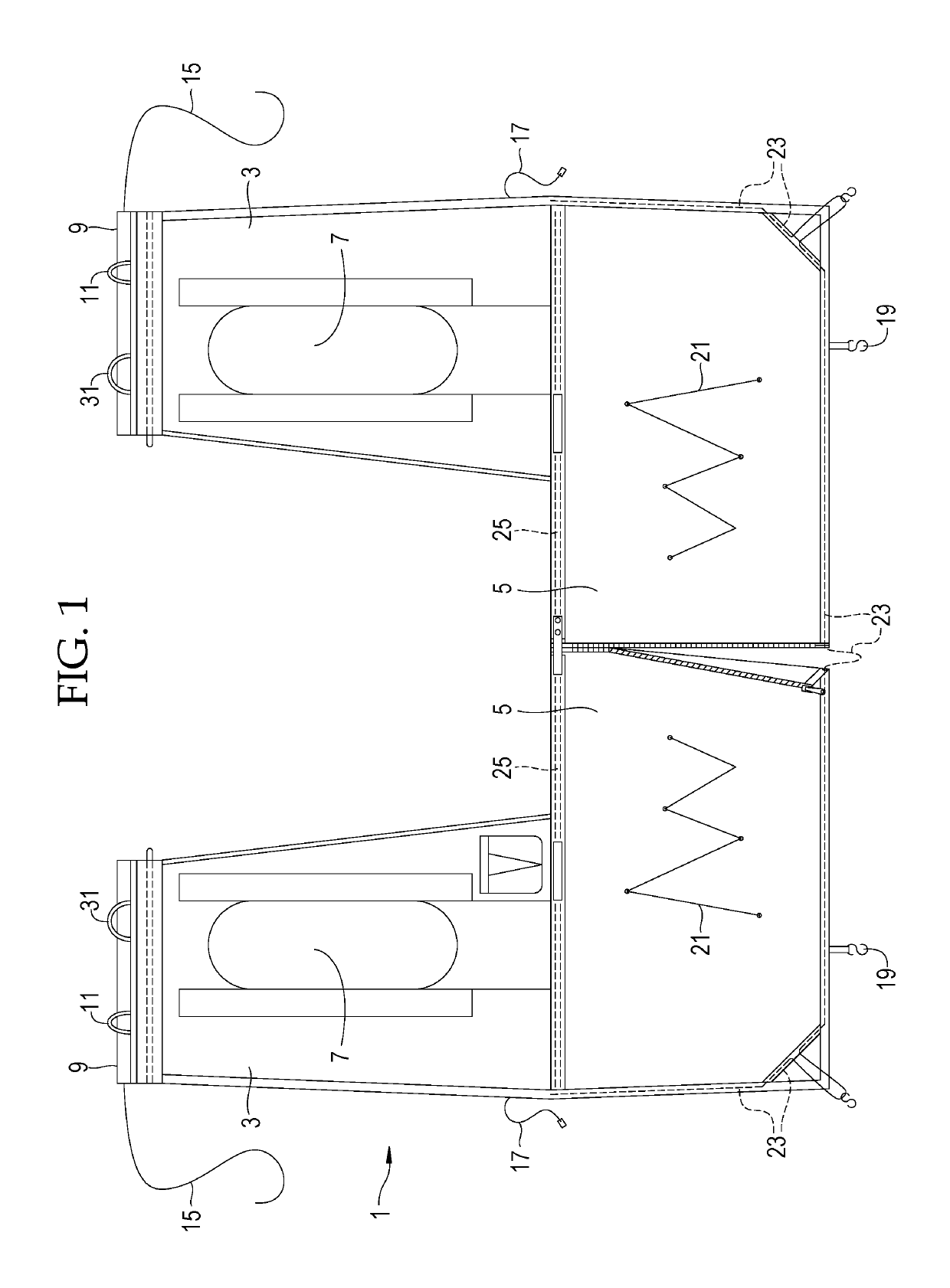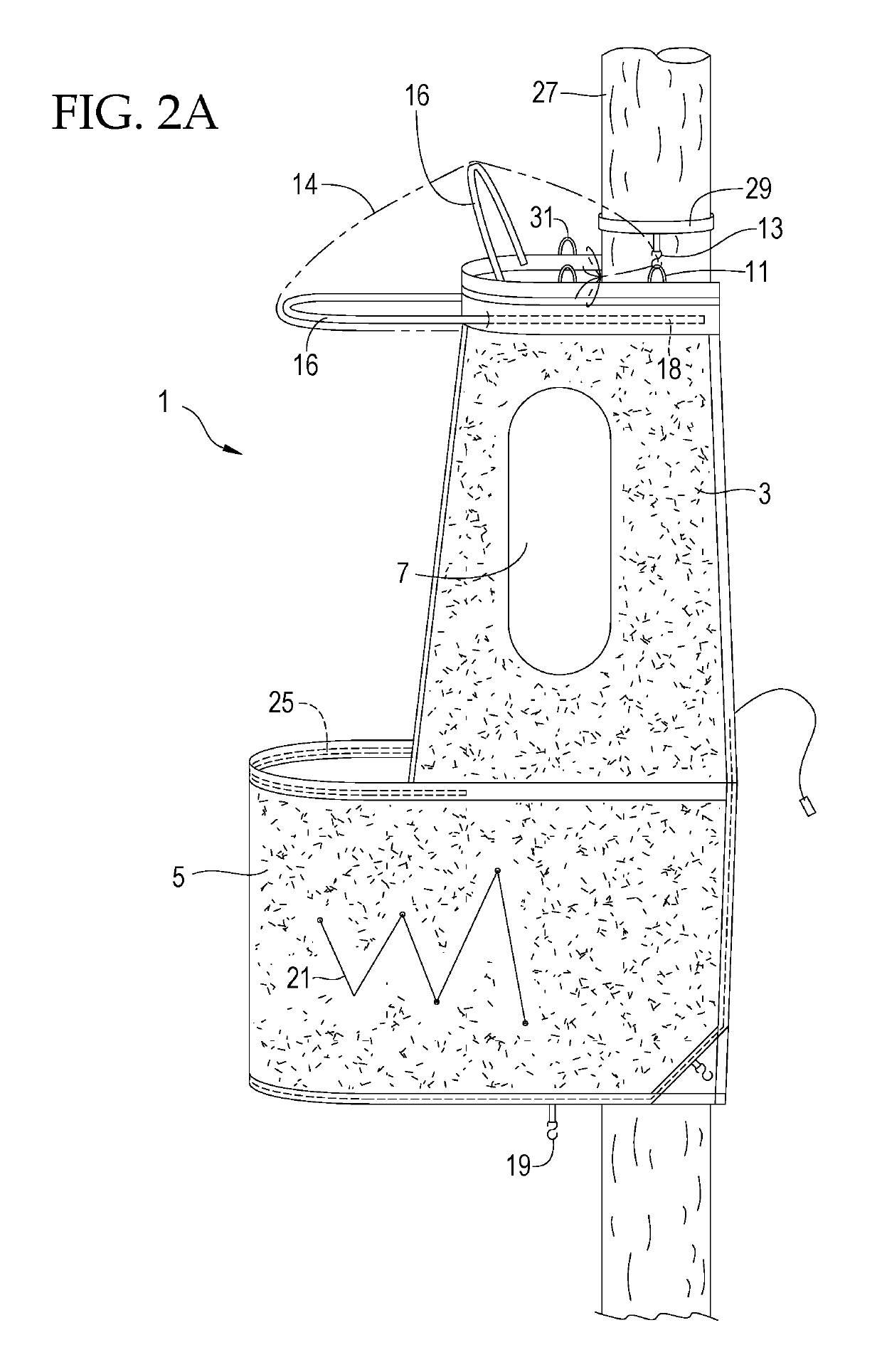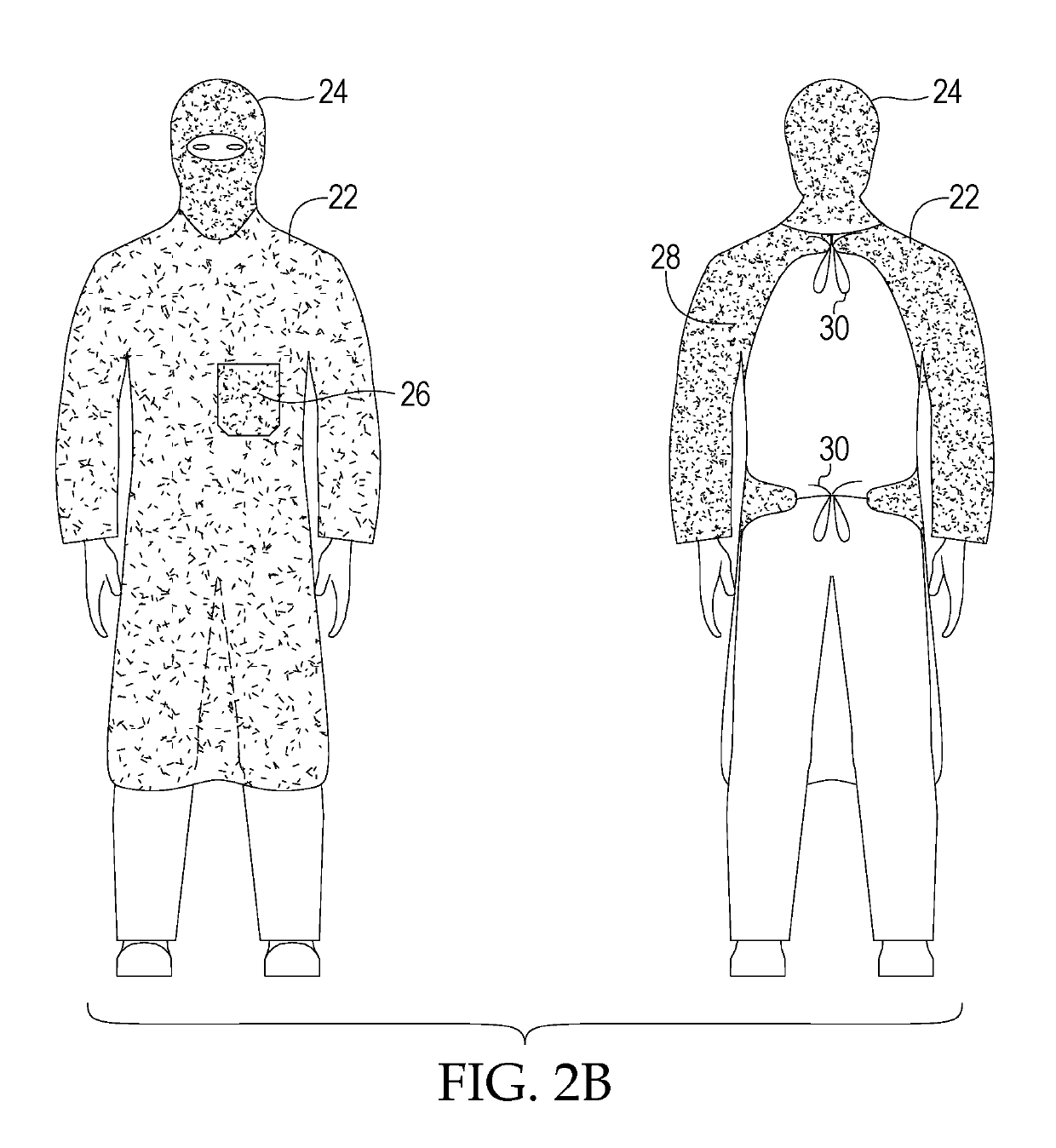Tree stand blind
a blind and tree stand technology, applied in the field of hunting blinds, can solve the problems of difficult access to the tree stand, no camouflage to break up the outline or silhouette, and the tree stand offers, and achieve the effect of preventing it from flapping in the wind
- Summary
- Abstract
- Description
- Claims
- Application Information
AI Technical Summary
Benefits of technology
Problems solved by technology
Method used
Image
Examples
Embodiment Construction
[0030]FIG. 1 depicts a tree stand blind 1 that is spread out on a flat surface. The blind 1 is comprised of two sides 3 connected by a lower center portion 5. The blind 1 may be made of flexible material, including a suitable fabric which may include a camouflage pattern to hide the user. For clarity, the figures are depicted in black and white. The blind 1 does not have a roof and does not have a complete front wall. Each side 3 of the blind incorporates a window 7. The windows 7 include a moveable shade mechanism that allows them to be fully or partially opened or closed as needed by the user. The top 9 of each of the sides 3 incorporates a rigid support section that may be formed by a sleeved fiberglass rod or other suitable material.
[0031]One or more support loops 11 are attached to the tops 9 of each side 3. The support loops 11 may be hung on hooks 13 (not depicted in FIG. 1) to suspend the blind 1 from a tree. The hooks 13 may be affixed to a tree strap (not shown) that is at...
PUM
 Login to View More
Login to View More Abstract
Description
Claims
Application Information
 Login to View More
Login to View More - R&D
- Intellectual Property
- Life Sciences
- Materials
- Tech Scout
- Unparalleled Data Quality
- Higher Quality Content
- 60% Fewer Hallucinations
Browse by: Latest US Patents, China's latest patents, Technical Efficacy Thesaurus, Application Domain, Technology Topic, Popular Technical Reports.
© 2025 PatSnap. All rights reserved.Legal|Privacy policy|Modern Slavery Act Transparency Statement|Sitemap|About US| Contact US: help@patsnap.com



